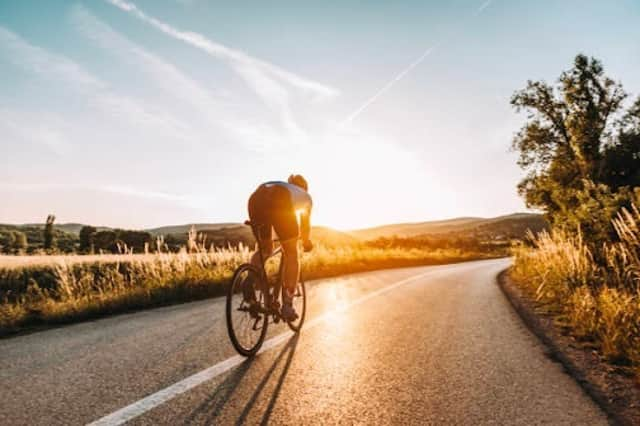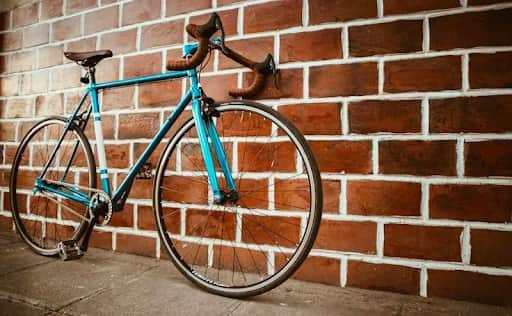Everything you need to know about bikepacking: Essentials and most useful tips for amateurs and professionals


Obviously, on a typical day, you would probably prefer to stay at home and bet at bookmakers not registered with GamStop but you’ll lose a lot if you don’t try bikepacking on your weekends. It is a unique way to travel and explore. Bikepacking is more than just a thrilling outdoor activity; it’s a lifestyle for dedicated people.
Plan and prepare
Before you start a journey, carefully plan and prepare. Here are some basic steps to get you started:
Choose your route:
Research and select a bikepacking route that matches your skill level and interests. Consider factors like terrain, distance and the availability of water and supplies along the way.
Check your gear: Ensure your bike and gear are in top condition. Check your tires, brakes and drivetrain, and make any necessary repairs or replacements. Don’t forget to bring tools for repairs on the road.
Pack light: Keep your gear lightweight and minimal. Invest in compact, multi-purpose gear and only bring what’s necessary.
Balance: Try to distribute weight evenly to maintain balance.
Food and water: Plan your meals and water sources along the route. Depending on the trail’s remoteness, you may need to carry more food and water.
Permits and regulations: Check for any necessary permits or regulations for your chosen route. Some trails have restrictions that you need to follow.
Choose the right bike
Pick a bike that matches where you'll be riding and what you’ll carry and make sure it fits you well for the most comfort. There are bikes designed for specific roads:
Gravel bikes: for riding on various terrains, including gravel roads, dirt paths and even pavement.
Mountain bikes: Ideal for rugged trails and off-road adventures.
Touring Bikes: Built for long-distance travel.
Fat bikes: With their oversized tires, fat bikes are great for soft and sandy terrain.
Learn bikepacking techniques
Bikepacking requires some unique skills that differ from regular cycling. Here are a few tips to consider:
- Distribute weight evenly between your handlebars, frame and seat post. Use a handlebar roll, frame bag and seat pack for efficient storage.
- Learn to read maps and use GPS devices or smartphone apps.
- Practice climbing steep hills and descending safely, especially on uneven terrain.
- Develop your off-road riding skills, including handling loose gravel, rocky terrain and stream crossings. Practice balancing and manoeuvring.
Choosing a frame bag
Consider these features when you choose a frame bag:
Attachment method: Look for bags that can be bolted onto the frame’s water bottle bosses for a clean and strap-free look.
Zippers: Keep in mind that zippers can be a weak point in frame packs. Avoid overloading your bag to prevent zipper splitting.
Single pocket or multiple pockets: Many frame packs have a main compartment on one side and a zippered flat pocket on the other, useful for storing small items like keys or a wallet. If you prefer organisation, you can find frame packs with multiple pockets.
A half-frame bag can be very useful. It is designed to fit only part of the bike frame triangle. Such a bag leaves space for one or two water bottles. The most common type is the half-frame bag, which runs along the top tube and is 4-8 inches (10-20 cm) tall. This type of bag works well with gravel bikes. If you’re new to backpacking, begin by reading this article.
Another cool bag is a handlebar roll also called a burrito. It’s a simple gear storage solution that's easy to use. It consists of a dry bag and handlebar attachments integrated into one unit. These rolls are compatible with most bikes, don’t take up much space, and don't require additional racks or accessories.
For better handling off-road, keep the handlebars light and place heavier gear low and toward the centre of the bike. The frame triangle is the best place for heavy items. Go for a small, lightweight hiking or biking pack of around 20 litres or less. Larger packs might not be comfortable.


Pack only essentials
When packing for a bikepacking adventure, take only the most essential things like:
- A lightweight, compact tent or shelter. Some bikepackers opt for bivvy sacks or hammocks for minimalism.
- Invest in a lightweight sleeping bag and pad that offer warmth and comfort without taking up too much space.
- Pack clothing suitable for changing weather conditions. Layers are essential and don’t forget rain gear and a warm hat.
- Opt for compact and lightweight cooking gear, such as a camp stove and cookware. Take with you pre-packaged, dehydrated meals as they are light and convenient.
- Use a hydration pack or bottles mounted on your bike frame for easy access to water.
- Do not forget to pre-download maps for a GPS device or smartphone. Take with you a reliable power bank.
Safety first
Safety should always be a priority during bikepacking adventures. Here’s how to stay safe on the trail:
- Pack a basic first aid kit, repair tools, spare parts and a multi-tool for on-the-go fixes.
- Communication: Bring a charged mobile phone and a power bank.
- Let someone know your itinerary and estimated return time.
- Learn navigation skills to avoid getting lost in unfamiliar terrain.
- Learn about the wildlife in the area you’ll be travelling through and take necessary precautions.
- Keep an eye on weather forecasts and be prepared for changing conditions.
Enjoy the journey but leave no trace
Bikepacking can be physically demanding but don’t forget to enjoy the journey. Take breaks to enjoy the scenery and take photos.
Connect with fellow backpackers and share stories around the campfire. And do not forget to respect the environment. When available, use organised campsites to minimise impact. Observe animals from a distance and avoid feeding them. If you need to wash dishes or yourself, use biodegradable soap and do so at least 200 feet away from water sources.
Share the Leave No Trace principles with your fellow adventurers and promote responsible outdoor behaviour.
So, gear up and hit the trail!
DISCLAIMER: If you suffer from a gambling problem or suspect somebody you know does, then we strongly suggest that you call the National Gambling Helpline at 0808-8020-133 to talk with an advisor for help and to make gambling safer for you or your loved ones. Remember all gambling sites and guides are 18+ only.
Visit these free gambling addiction resources: